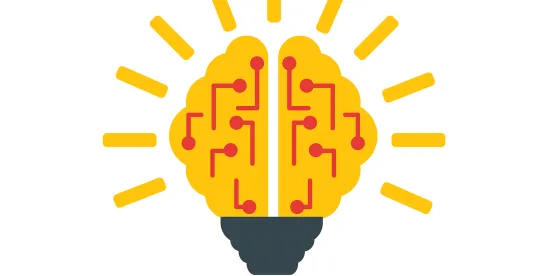Synopsis: On January 14, 2025, the USPTO unveiled a new Artificial Intelligence (AI) Strategy, which outlines responsible implementation of AI within the agency and more generally across the intellectual property (IP) landscape.
The strategy furthers the USPTO’s vision and identifies five focus areas specifically for AI, each of which have their own set of executable actions. This is the first effort to provide an outline of challenges and goals for utilizing AI and encouraging adoption and innovation in AI related fields. The AI strategy demonstrates the USPTO’s recognition of the importance of AI, including its role in the development of AI and plans for leveraging the benefits of AI.
AI has the potential to disrupt many different technical fields. There is also an influx of AI-related patent applications. The release of this USPTO AI Strategy is reassuring for inventors and attorneys alike, because it demonstrates the USPTO’s understanding of the role AI in innovation and its commitment to maintaining US leadership in innovation.
*****
On January 14, 2025, the USPTO unveiled a new Artificial Intelligence (AI) Strategy to guide the responsible implementation of AI within the agency and across the intellectual property (IP) landscape. The strategy aims to foster inclusive AI innovation, support the USPTO’s vision and mission, and maintain U.S. leadership in innovation.
The USPTO AI Vision is “[u]nleashing America’s potential through the adoption of AI to drive and scale U.S. innovation, inclusive capitalism and global competitiveness.” The USPTO also lists several aspects for their AI Mission:
- Foster the research, development and commercialization of AI in the domestic and global economy.
- Leverage AI effectively and responsibly to empower our staff, optimize our operations and deliver value to our stakeholders.
- Empower current and future innovation and investment in the same through data and research.
The strategy sets forth five focus areas to advance their AI Vision and Mission, which include:
- IP Policy Development
- AI Capabilities
- Responsible AI Use
- Workforce Expertise
- Collaboration
The USPTO have also identified a set of concrete actions for each of the five focus areas to advance both the USPTO’s AI Vision and Mission.
1. IP Policy Development: Advance the development of IP policies that promote inclusive AI innovation and creativity.
Action 1.1:Ensure that USPTO anticipates and effectively responds to emerging AI-related IP policy issues. The USPTO plans to address AI-related issues for patents, trademarks, copyright and other IP protections.
Action 1.2: Study the interplay between AI innovation, economic activity and IP policy. These actions include researching through economic and legal studies on the impacts of IP policy on AI-related innovation, and outreach for direct engagement with AI researchers, practitioners and other stakeholders.
Action 1.3: Encourage inclusion in the AI innovation ecosystem. The USPTO identifies the importance of engaging in outreach to PreK-12 students and teachers, supporting and mentoring post-secondary students and supporting post-secondary educational institutions, broad access to AI tools for under-resourced innovators (e.g., small and medium-sized enterprises) and continued program development for STEM careers, entrepreneurship and IP protection in under-represented and under-resourced communities.
Action 1.4: Contribute to broader IP policymaking in collaboration with Congress, interagency, and international partners, and the public. Collaborating both internally and externally will help ensure an open marketplace, develop IP and AI standards and ensure robust and enforceable IP rights.
2. AI Capabilities: Build best-in-class AI capabilities by investing in computational infrastructure, data resources and business-driven product development.
Action 2.1: Continuously advance the USPTO’s usage of computing and data resources to enable AI for increasingly complex use cases.
Action 2.2: Pursue mission-focused AI innovation, from prototyping to deployment. This can include identification of areas of opportunity, evaluation and adoption of new AI technologies and implementation and deployment of new AI capabilities.
Action 2.3: Closely align business areas, technology and end users to maximize stakeholder value. The USPTO recognizes that AI systems should be co-developed with the business processes into which they will be integrated. These AI tools will continually invest in refining these systems and enhance value delivery by soliciting regular feedback and directly integrating feedback loops into the AI systems.
3. Responsible AI Use: Promote the responsible use of AI within the USPTO and across the broader innovation ecosystem.
Action 3.1: Maintain public trust in the USPTO’s adoption of AI through value-aligned product development, risk mitigation and transparent stakeholder communication. This includes upholding equity, rights, civil liberties and robust and secure IT practices. Additionally, the USPTO must clearly convey benefits and limitations of the AI systems to stakeholders.
Action 3.2: Monitor and address the use of AI in the broader innovation ecosystem to help shape IP and innovation. The USPTO is prioritizing understanding AI’s role in legal practice and encouraging responsible AI use by promoting IP awareness and compliance with IP laws and policies.
4. Workforce Expertise: Develop AI expertise within the USPTO’s workforce.
Action 4.1: Expand training to address AI-related subject matter in USPTO examination. The USPTO will promote AI fluency for examiners by developing foundational curricula available to all examiners, ensuring depth and recency of training offerings and attracting and recruiting AI skillsets in examiner hiring.
Action 4.2: Empower the workforce with AI expertise to support diverse organizational needs. The USPTO identifies several areas for developing AI skillsets, the areas including IT, adjudication and legal services, USPTO-wide AI resources and education on effective and responsible use of AI.
5. Collaboration: Collaborate with other U.S. government agencies, international partners and the public on shared AI priorities.
Action 5.1: Collaborate through the USPTO AI and Emerging Technology Partnership and beyond to inform the USPTO’s next steps as to AI policy and technology. The specific aims of collaboration include strategic direction and prioritization, academic inquiry and innovation and technology transfer and commercialization.
Action 5.2: Promote interagency collaboration and identify new opportunities to collaborate with government agencies. The USPTO identified several opportunities including intradepartmental collaboration, agency partnerships and interagency efforts.
Action 5.3: Collaborate with international partners on AI matters impacting the global IP system. The USPTO has engaged in numerous AI-related consultations with partner IP offices that have been informative in assessing the readiness of various AI technologies for internal use cases. The USPTO will also continue to collaborate with key international IP bodies.
The USPTO AI strategy reflects the USPTO’s recognition of the importance of AI, its plans to take a role in fostering its development, and its plans to leverage the benefits of AI wherever possible. This is the USPTO’s first major effort at outlining the challenges and goals for utilizing the full potential of AI, both within its own agency operations and by encouraging its adoption throughout society. The USPTO AI Strategy complements and focuses the agency’s vision of “Unleashing America’s Potential” to the adoption of AI.
This strategy comes in alongside the new presidential administration, which recently announced up to a $500 billion investment to build AI infrastructure. We will continue to watch how the strategy is executed and its evolution over time under the direction of the new USPTO Director, Coke Morgan Stewart.
We look forward to seeing the positive impact from the USPTO’s AI Strategy. It is an exciting period for AI and technology innovation, and we encourage everyone to learn more about the potential and benefits of AI.
The announcement of the AI Strategy can be found here.






 />i
/>i

